#Irv Teibel
Explore tagged Tumblr posts
Text


IRV TEIBEL 🙏
#take my money#irv teibel#field recording#iOS apps#android apps#environments#soundscape#ambient#music#g
15 notes
·
View notes
Text






[rec. Irv TEIBEL]
"Environments - Disc 8 : Sailboat / Country Stream"
(LP. Syntonic Research inc. 1974) [US]
youtube
1 note
·
View note
Text
https://mediamonarchy.com/wp-content/uploads/2024/06/20240626_MorningMonarchy.mp3 Download MP3 THC drinks, permaculture BBQs and cicada bloom LPs + this day in history w/Frankenfish and our song of the day by Zoe FitzGerald Carter on your #MorningMonarchy for June 26, 2024. Notes/Links: Cancer-Drug Costs Skyrocket, Leaving Even Insured Patients in Financial Ruin; As cancer rates rise for people under 50, the cost of life-saving treatment is rising far past their ability to pay. https://www.theepochtimes.com/health/cancer-drug-costs-skyrocket-leaving-even-insured-patients-in-financial-ruin-5666035 Supreme Court Turns Away COVID-19 Vaccine Appeals; Justices denied petitions from a nonprofit founded by Robert F. Kennedy Jr. https://www.theepochtimes.com/us/supreme-court-turns-away-covid-19-vaccine-appeals-5674328 Ex-‘Mandalorian’ star Gina Carano sues Lucasfilm, Disney for wrongful termination (Feb. 7, 2024) https://www.usatoday.com/story/entertainment/tv/2024/02/07/gina-carano-mandalorian-firing-sues-disney/72505010007/ Video: GINA CARANO BELIEVES HER BEST FRIEND DIED FROM THE “VACCINE” (Audio) https://www.bitchute.com/video/TZXZoc06mbc4/ More Gen Zers are becoming NEETs — what does it mean and is it a bad thing? https://nypost.com/2024/06/21/lifestyle/gen-z-leans-into-neet-culture-but-what-is-it/ Long-standing vegan restaurant Blossoming Lotus closes after two decades in Portland (Apr. 4, 2024) https://www.oregonlive.com/dining/2024/04/blossoming-lotus-closes-long-running-portland-vegan-restaurant.html Hey, look who I ran into: It’s my man Chris Walla of #DeathCabForCutie! We used to chat at @newseasons in #pdx https://x.com/mediamonarchy/status/486300553903738881 Blossoming Lotus https://en.wikipedia.org/wiki/Blossoming_Lotus Cannabis-infused drinks will be sold at Portland Pickles games in ‘historic’ new partnership; The Pickles will be the first sports team to legally sell THC drinks during a live sporting event. https://www.kgw.com/article/money/business/portland-pickles-thc-seltzers/283-8c24c110-4919-492b-a2ee-8fc3740355e0 Video: Thousands of Providence nurses striking prepare for return (Audio) https://www.youtube.com/watch?v=6YhU9T_tZbw Video: LA firefighters back after vaccine mandate ends (Audio) https://www.foxla.com/video/1473654 The Grateful Dead – “The Golden Road (To Unlimited Devotion)” (Vinyl // Audio) https://www.discogs.com/release/18965026-The-Grateful-Dead-The-Grateful-Dead // https://genius.com/The-grateful-dead-the-golden-road-to-unlimited-devotion-lyrics // https://www.youtube.com/watch?v=7jIVt-0L_3Y #MounseyMinute MP3: Episode 6 – BBQ With a Permaculture Twist (Audio) https://mediamonarchy.com/wp-content/uploads/2024/06/20240626_MounseyMinute_6_BbqWithPermacultureTwist.mp3 #MounseyMinute TXT: Episode 6 – BBQ With a Permaculture Twist https://mediamonarchy.com/wp-content/uploads/2024/06/20240626_MounseyMinute_6_BbqWithPermacultureTwist.txt Previous #MounseyMinute: Shout About Sauerkraut https://mediamonarchy.com/20240522morningmonarchy/ Jerry Garcia – “Deal” (Vinyl // Audio) https://www.discogs.com/release/18923602-Jerry-Garcia-Garcia // https://en.wikipedia.org/wiki/Garcia_(album) // https://www.youtube.com/watch?v=SS5z2yUnVfc Ecological Art | PlantBot Genetics and Monsantra https://www.monsantra.com/ “Perfectly preserved” 18th century cherries found in George Washington’s Mount Vernon basement https://www.msn.com/en-us/lifestyle/lifestyle-buzz/perfectly-preserved-18th-century-cherries-found-in-george-washingtons-mount-vernon-basement/ar-BB1owTgq New Mexico heavy rain and flash flooding prompt mandatory evacuations https://apnews.com/article/new-mexico-las-vegas-flash-flooding-evacuation-d8b2dc1d3a557291f8a3a15a959d25ce In the tradition of Environments mastermind Irv Teibel, Numero’s crack team of audio archivists have documented 2024’s once-in-two centuries cicada super bloom phenomena. https://x.com/numerogroup/status/1803125393010073942 Videos: The Psychologically Ultimate 220 Year Cicada Super Bloom https://www.youtube.com/pla...
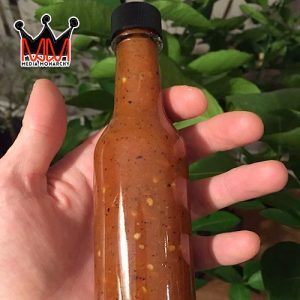
View On WordPress
#alternative news#food world order#media monarchy#Morning Monarchy#mp3#podcast#Songs Of The Day#This Day In History#Zoe FitzGerald Carter
0 notes
Text

Ashan & Inner Travels in Conversation (November 2019)
In August of 2019, Ashan and Inner Travels released albums (Transfigurations and Nature Spirit, respectively) on Inner Islands. Throughout the last couple months the two have had an on-going email dialogue about their new releases and the creative process in general. Ashan is Sean Conrad, who also runs Inner Islands and releases under the Channelers moniker. Inner Travels is the work of Steve Targo, who has been releasing a stream of incredible synthesizer, keys, and field recording-based output for the last 5+ years and has been consistently releasing with Inner Islands since 2016. The flow of the following conversation has been slightly edited for ease of reading.
Ashan: Hey there Steve, I would like to start by saying what a pleasure it’s been to work with you over the last few years. And it’s been a joy watching the Nature Spirit album take shape and come to life. I know this project started in quite a different state. How did the final vision for the album come to you and what was your process in realizing it?
Inner Travels: Sean, it has been such a blessing to work with someone as kind, patient and understanding as you! It means a great deal that you enjoyed watching Nature Spirit grow, since you were instrumental in its creation. So was Jason C, who asked me to make a mix for his radio show in Seattle. That’s how this started. I wanted to use the opportunity to showcase my unreleased music, so I picked 4 songs and shared them with you. Much to my surprise, you wanted to release them! That’s when I began to think about the music in album terms. Lately, I’ve been making music without much thought as to what I’m going to do with it. As you probably know, of those songs I shared with you, “Babble” is only one on Nature Spirit. That’s because I felt it went so well with “Forest,” another song I had and didn’t know what to do with. Now I had one side of a tape. I recorded more music specifically for Nature Spirit, which is how “Calm After the Storm” was born. Musically, the album was complete. But I spent a great deal of time on the nature sounds – mixing various field recordings together to create scenes. As the album was developing, I discovered and completely fell in love with Takatoshi Naitoh’s In the Forest. Its structure inspired me so much! About 5 minutes of forest sounds, then a song. Then another lengthy section of forest sounds, and another song, more forest sounds. … Usually, I hear nature recordings with music one of two ways – as a 1-2 minute interlude or playing throughout the entire duration of an album. Giving nature sounds more time to be heard on their own – no music – appealed to me greatly. It made me think more about how the field recordings relate to the music.
Ashan: Yes! I absolutely love how the field recordings get their own spotlight on the album. What was your process like for gathering the field recordings? Do you come across a spot that has a great sound and you think you’d like to go back there later with a recorder? Or is it more spontaneous?
Inner Travels: Usually, I’ll bring a recorder where I think I might hear some nice nature sounds, like to a park or a trail. Sometimes I just open a window when it rains and hit record! But it is a challenge to get more than a minute’s worth of nature sounds without being interrupted by the sounds of passing motor vehicles. Most of the field recordings on Nature Spirit are edited, or they are collages of several recordings from different places — by a creek, in a forest, different thunderstorms mixed together. I wanted to leave machines out of the nature sounds, but I also wanted to try designing my own climate or landscape.
Ashan: I haven’t researched it too much, but from what I’ve read Irv Teibel used a similar process of combining elements of field recordings for his Environments series to make these fantasy versions of nature without certain undesired human-centric sounds. What is appealing to you about designing your own environments and landscapes? I think that fantasy can be a powerful tool in getting a different perspective on the mundane reality. Do you experience that at all?
Inner Travels: Generally speaking, the appeal lies in taking the listener on a journey and having some kind of positive impact on that person. Both are equally important. Additionally, on Nature Spirit, I wanted to have the sounds of the woods that I remember from when I was a child. The woods around here are much quieter today, and smaller, so I applied techniques to achieve that goal. It is fantasy — you’re right — but it is rooted in my own reality, as I remember it, anyway. How did your new Ashan album, Transfigurations, spring to life?
Ashan: The pieces that make up Transfigurations were made during the same creative arc that also produced the tracks for Far Drift Afield, which started in November 2017 and probably went until April or May of 2018. All the tracks for both albums were made in a very similar way: choosing sound palettes that appealed to me and then making the elements of the palette intermingle in a complex pattern for a while. I love how organic and “played” it feels though. It feels like I chose the palette and someone else performed it. I’m really into that balance of organization and chaos that drives these pieces.
Inner Travels: “Chaos” is not a word I’d use to describe either album! Did you play the instruments on each song from start to finish? How did they mingle with each other?
Ashan: It’s kind of funny. People might describe something like a Hendrix guitar solo as chaotic, but he’s actually very calculated. And although my work on this album is very mellow, it’s chaotic in a compositional sense because I didn’t decide the sequential unfolding of the pieces. The pieces are all made from grabbing snippets of things (some I played and some I found) and looping them with different loop durations and having them fade in and out at different prescribed intervals. So although I am the one determines the loop and fade lengths, I have no idea what it’s actually going to sound like until I push play. My strongest intention when composing these is the palette of the sound, the rest is what I deem chaotic.
Inner Travels: How did you discover the process you used for Transfigurations and Far Drift Afield? Did you find it easier to create by setting loose loops of intermittent lengths? I’m also curious to know how you chose your sonic palettes for these songs. It sounds like you also have a number of field recordings mingling in the mix.
Ashan: I started this process shortly after I moved, back in the fall of 2017, to a much smaller space and couldn’t leave all my gear set up the way I used to. Everything is always in a case, on shelves, or in the closet. I really love working quickly, so I needed a way to create without having to set up so much stuff. I found a flow recording one or two new elements and sampling the others (both sampling myself and others). I tried making one piece with the various loop lengths (the track “Far Drift Afield”) and thought it sounded really weird. But after a while it kind of grew on me and I made more. There are so many inspirations for this kind of composition: the way cricket sounds phase in and out of each other, the sound of waves, Steve Reich’s “Come Out”, Brian Eno’s generative works, and so much more. The sonic palettes for the pieces came from abstract feelings and images that I wanted to re-create in sound as closely as I could, trying to manifest these imaginations into the realm of sound. These pieces, to me, are almost like sculptures because their makeup is so static. But the sculptures are slowly revealing new facets of themselves because of the temporal aspect and the way the elements of the pieces mingle in time. There are a couple of field recordings on the first two tracks of Far Drift Afield, some rain sounds. But there is some noise in a lot of these tracks that might pass as field recordings, hehe. I sampled from some of my cassette demos and from vinyl for a number of these tracks. I think it’s fascinating that you were working with evoking these memories of the woods from your childhood with your field recordings. Are your recordings from the same woods that you visited when you were growing up? Were you thinking about any particular memories when you were designing these environments? Or was the reference point something more general? And what was the effect for you hearing your memories materialized and encapsulated in sound?
Inner Travels: I feel tranquility in the field recording collages on Nature Spirit. I feel as if the music grows out of these collages, and the two become one sonic entity. So there’s this wholeness to the listening experience for me. And I do feel what it was like going into the woods as a kid, where everything’s new and you pay closer attention to details. I did not record in the woods where I used to play as a child, but I recorded not far from there, at a small forest park. This was the most difficult place in which to collect usable field recordings because of how many vehicles drive past the park every minute or two. Looking back, I might have subconsciously took on the challenge because of its proximity to my old neighborhood. From like the age of 4 to 14, I grew up in a subdivision where there was a wooded area across the street from a playground. To the childhood me, it may as well have been a forest without end. But a few years ago, an old friend and I walked through it all fairly quickly and easily. I think we were taken aback by how small the woods became — or always were. I know I was. Everything seems large when you’re a child. I think, too, that many trees died or fell there over the years, and other developments came into the area.
Ashan: The way that you worked with the field recordings makes me feel like I’m engulfed in this huge wooded area, completely set apart from any human, urban development. For me, I find spaces that are dominated by the presence of non-human life to be super potent. They can be awe-inspiring, beautiful, and definitely ominous sometimes. There is a power there that I’m really attracted to. I feel like your work on this album touches on some of the more benevolent forces that can exist in those spaces.
Inner Travels: Great! I really wanted nature to sound big and kind here. But you’re right, it can be ominous, especially on a large scale. Especially when it’s a thunderstorm, like in the intro to “Calm After the Storm.�� But it’s a storm that’s winding down. On Nature Spirit, I tried to make the outside world inviting, so that the listener would want to close their eyes and hear it. Your process, the notion of songs as sound sculptures — it’s all very appealing! Do you find this method of making music easier than other more conventional approaches? Are you still using this approach to make music? If so, will you use it in other projects of yours, like Channelers?
Ashan: I can’t say I find the sound sculpture method any easier than other methods. It’s all just a matter of if I can get into a groove while working with the sounds. The pieces that I think are the best are the ones that are mostly realized in one sitting, or at least the scope of the piece is within sight in the first sitting. I’ve tried making some more pieces with this process, but none of them have really turned into much. At the moment, I’m trying to keep the Channelers project more rooted in live instrumental performance. The Ashan work over the last few years has been more about electronic, computer-based approaches. Do you think you would be able to translate some of your Inner Travels pieces to a live setting? I would love to see you do a live set one of these days.
Inner Travels: I am grateful that you want to hear me play live. Honestly, I never have. I would like to play an Inner Travels set someday. The right opportunity still has to present itself. Once it does, sure, I think I could translate my music live. But right now, my focus continues to be on recordings. That’s where I feel my music has the deepest effect.
Ashan: I hope I’m there for one of your performances, if they ever happen :)
Inner Travels: Oh that would be wonderful! I hope you are, too. It would be nice to meet. You have played live before, right? What do you enjoy most about it? How do you translate your music when you perform? I’m especially interested in how you would handle performing Transfigurations and your other recent albums.
Ashan: I’ve played out and toured a fair bit over the years, but within the last few years I’ve felt similarly to you: that my work perhaps has a deeper effect on record than live. But I definitely think there can be something powerful about the live experience, especially if the space and the sound system both support the vision of the music. I think the power of the work can grow in magnitude if these factors are considered. Trying to do this kind of music at a bar venue with a poor sound system that has little clarity in the high mids and highs is really just a recipe for disaster, haha. It’s just not good for anyone involved. But when these things are taken care of I feel like the music can be much more immersive. Because the sound is coming out of larger speakers than one usually uses at home, the physicality of the sound resonates both in the architecture of the space and in one’s body more. I think it’s actually a powerful role to be in as the person in charge of the sound in the room. There’s definitely some responsibility there as to what you, as the performer, are choosing to bring into the space and into people’s bodies. When done mindfully, I think it can be a really positive experience.
Inner Travels: Although I haven’t performed music live, I have DJed weddings and parties. It is a different world, but to a probably much lesser extent, I have felt that responsibility of being the person in charge of the sound of the room. I say lesser because no musical performance was required of me, nor was I ever playing my own music. I used to DJ before I started making music. But when music resonates in one’s body, that is such a special thing. I would like to experience that with my own music someday — and yours, for that matter. You are right, I completely agree with what you say about how positive it can be to perform.
Ashan: If I was going to try to perform the new Ashan pieces, I would definitely need to use my laptop with Ableton Live. Nothing about that work is really playable on an instrument. Lately, I prefer to play my Channelers material live because the recordings themselves have more of a basis in improvisational instrumental performance. Some pieces just kind of lend themselves more to a live setting, so I’ll just focus on those more. I’ll often use my dulcimer, a synth, a sampler, and some effects.
Inner Travels: Do you improvise then, when you play as Channelers? I’m also curious if you use field recordings live? Your nature sounds are immaculate on the upcoming Channelers album!
Ashan: Yeah, there is always a framework and there are always elements of improvisation in a Channelers set. I want things to feel dialed in to a certain degree, but to have enough freedom to explore and be in the moment with my playing. When I haven’t had as much improv in my sets, I have felt like I’m performing in a box and the set lacks a certain vitality. A lot of your pieces feel like they contain long, unbroken improvised takes. Is that actually a method you use often? Or is there actually a lot of editing behind the curtain?
Inner Travels: The answer to both questions is yes. I make up one part, say a rhythm or a melody, then I build over the top of that. I try to play long, too, until I get bored. I play it, record it, go over it later, edit if I feel the need. I’d say some of the most edits I’ve ever made in a song was on Nature Spirit. A lot of parts were cut out of “Forest.” Sometimes it felt as if all the keyboard parts were just talking over each other without listening, like when people argue, haha! But all the songs on the album had things removed. Some improvisations just didn’t work. When I create music, I make it up as I go. Sometimes, better ideas about composition present themselves at the mixing phase. Like on “First Light (Part 2),” all the elements were played over each other when I recorded it. It was a straight river of sound. But while soloing each track, I thought it might make more sense to start out with one sound, then gradually fade the other tracks into the mix. So I carved out the arrangement after the fact. Did you ever have that experience? How much of your music on tape is improvised and edited?
Ashan: Improvising and editing is definitely my go-to as well for recording on the computer - being as free as possible and then just grabbing the best moments. Recording on tape is a different animal though. There are almost never any edits to my tape works (Arden Tapes, Space Makes Clearing, Faces of Love, Slow Leaf Spell). I’ll just do another take if a part isn’t up to scratch. And there are often elements of improvisation in all of those, but the frameworks are almost always laid out beforehand. Then the final mixes are made in the tape machine and digitized/crystallized. What do you have planned for Inner Travels going into 2020? Any releases or collaborations on the horizon?
Inner Travels: There is an album that I have been working on since 2017 which I hope to finally finish by early next year. Also I will probably release the music that I did give Jason C for his radio show. I am involved in a couple collaborations. I’m not sure I go into great detail about them, other than I’m truly excited about them! My hope is to finish both of these projects next year as well. Speaking of collaborations, I loved your Skyminds tape with Michael from earlier this year! What about your plans for 2020?
Ashan: Excellent! I’m excited for more folks to hear those pieces you gave to Jason C. And I’m looking forward to the unveiling of the collaborations you have going and the album that’s been in the works! Thanks for the kind words on the Skyminds album :) We’re planning to release our follow-up early next year! And we’re also hoping to get a couple more things out throughout 2020. I also have a Channelers album that will probably come out on Inner Islands in the spring - the latest round of tape pieces, which has been an ongoing project since 2017. And who knows what else! Things always seem to reveal themselves through the year ;)
0 notes
Text

Irv Teibel - Environments 1
1969
2 notes
·
View notes
Text

Irv Teibel
2 notes
·
View notes
Text
#740 - Environments 3: Dawn & Dusk at New Hope, PA - Irv Teibel/Syntonic Research Inc.

Chill, but nature recordings can only do so much for me, sadly.
68/100
#Environments 3: Dawn & Dusk at New Hope PA#1970#deleted#68/100#nature recordings#Irv Teibel#Syntonic Research Inc.
0 notes
Photo

Natural Selection: How a New Age Hustler Sold the Sound of the World | Pitchfork
1 note
·
View note
Quote
Eventually, all the music of the future becomes the music of the past, even if it was never music to begin with.
Cara Giaimo
As Teibel sinks into something like obscurity, science is finally catching up. Over the past couple of decades, researchers have been trying to pin down whether and how well a good dose of outdoor audio actually works for the mind—and so far, evidence suggests there’s something to it.
0 notes
Video
youtube
(via The Man Who Recorded, Tamed, and Then Sold Nature Sounds to America)
0 notes
Photo

Irv Teibel: Environments
https://open.spotify.com/artist/72DfMqmMQyr6LraqB7nEKv
https://itunes.apple.com/us/app/environments/id1294132065
0 notes
Text





[rec. Irv TEIBEL]
"Environments - Disc 9 : Pacific Ocean / Caribbean Lagoon"
(LP. Syntonic Research inc. 1979) [US]
youtube
17 notes
·
View notes
Text
Irv Teibel Environments Playlist
Jonathan Een Newton of the Irv Teibel Archive has posted a playlist to Youtube of different tracks either inspired by, or using a sample from, the Environments LP series on Atlantic Records that Irv produced in the 70s. These had two side-long field recordings per record, up to 30 minutes each; a major label taking on a decidedly avant garde exercise and marketing it as a kind of “relaxation” product, very curious. Anyway, my track “Muhammed Ali and the Crickets” from “A New York Minute” is on the playlist, check it out here.
0 notes
Photo
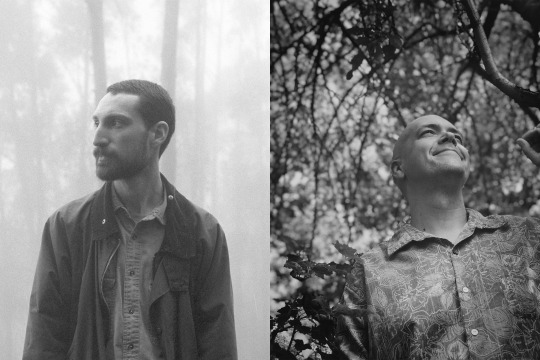
Ashan & Inner Travels in Conversation
In August of 2019, Ashan and Inner Travels released albums (Transfigurations and Nature Spirit, respectively) on Inner Islands. Throughout the last couple months the two have had an on-going email dialogue about their new releases and the creative process in general. Ashan is Sean Conrad, who also runs Inner Islands and releases under the Channelers moniker. Inner Travels is the work of Steve Targo, who has been releasing a stream of incredible synthesizer, keys, and field recording-based output for the last 5+ years and has been consistently releasing with Inner Islands since 2016. The flow of the following conversation has been slightly edited for ease of reading.
Ashan: Hey there Steve, I would like to start by saying what a pleasure it's been to work with you over the last few years. And it's been a joy watching the Nature Spirit album take shape and come to life. I know this project started in quite a different state. How did the final vision for the album come to you and what was your process in realizing it?
Inner Travels: Sean, it has been such a blessing to work with someone as kind, patient and understanding as you! It means a great deal that you enjoyed watching Nature Spirit grow, since you were instrumental in its creation.
So was Jason C, who asked me to make a mix for his radio show in Seattle. That’s how this started. I wanted to use the opportunity to showcase my unreleased music, so I picked 4 songs and shared them with you. Much to my surprise, you wanted to release them! That's when I began to think about the music in album terms. Lately, I've been making music without much thought as to what I'm going to do with it.
As you probably know, of those songs I shared with you, “Babble” is only one on Nature Spirit. That's because I felt it went so well with "Forest," another song I had and didn't know what to do with. Now I had one side of a tape. I recorded more music specifically for Nature Spirit, which is how “Calm After the Storm” was born. Musically, the album was complete. But I spent a great deal of time on the nature sounds -- mixing various field recordings together to create scenes.
As the album was developing, I discovered and completely fell in love with Takatoshi Naitoh’s In the Forest. Its structure inspired me so much! About 5 minutes of forest sounds, then a song. Then another lengthy section of forest sounds, and another song, more forest sounds. ... Usually, I hear nature recordings with music one of two ways -- as a 1-2 minute interlude or playing throughout the entire duration of an album. Giving nature sounds more time to be heard on their own -- no music -- appealed to me greatly. It made me think more about how the field recordings relate to the music.
Ashan: Yes! I absolutely love how the field recordings get their own spotlight on the album. What was your process like for gathering the field recordings? Do you come across a spot that has a great sound and you think you'd like to go back there later with a recorder? Or is it more spontaneous?
Inner Travels: Usually, I’ll bring a recorder where I think I might hear some nice nature sounds, like to a park or a trail. Sometimes I just open a window when it rains and hit record! But it is a challenge to get more than a minute’s worth of nature sounds without being interrupted by the sounds of passing motor vehicles. Most of the field recordings on Nature Spirit are edited, or they are collages of several recordings from different places — by a creek, in a forest, different thunderstorms mixed together. I wanted to leave machines out of the nature sounds, but I also wanted to try designing my own climate or landscape.
Ashan: I haven't researched it too much, but from what I've read Irv Teibel used a similar process of combining elements of field recordings for his Environments series to make these fantasy versions of nature without certain undesired human-centric sounds. What is appealing to you about designing your own environments and landscapes? I think that fantasy can be a powerful tool in getting a different perspective on the mundane reality. Do you experience that at all?
Inner Travels: Generally speaking, the appeal lies in taking the listener on a journey and having some kind of positive impact on that person. Both are equally important. Additionally, on Nature Spirit, I wanted to have the sounds of the woods that I remember from when I was a child. The woods around here are much quieter today, and smaller, so I applied techniques to achieve that goal. It is fantasy — you’re right — but it is rooted in my own reality, as I remember it, anyway.
How did your new Ashan album, Transfigurations, spring to life?
Ashan: The pieces that make up Transfigurations were made during the same creative arc that also produced the tracks for Far Drift Afield, which started in November 2017 and probably went until April or May of 2018. All the tracks for both albums were made in a very similar way: choosing sound palettes that appealed to me and then making the elements of the palette intermingle in a complex pattern for a while. I love how organic and "played" it feels though. It feels like I chose the palette and someone else performed it. I'm really into that balance of organization and chaos that drives these pieces.
Inner Travels: “Chaos” is not a word I’d use to describe either album! Did you play the instruments on each song from start to finish? How did they mingle with each other?
Ashan: It's kind of funny. People might describe something like a Hendrix guitar solo as chaotic, but he's actually very calculated. And although my work on this album is very mellow, it's chaotic in a compositional sense because I didn't decide the sequential unfolding of the pieces. The pieces are all made from grabbing snippets of things (some I played and some I found) and looping them with different loop durations and having them fade in and out at different prescribed intervals. So although I am the one determines the loop and fade lengths, I have no idea what it's actually going to sound like until I push play. My strongest intention when composing these is the palette of the sound, the rest is what I deem chaotic.
Inner Travels: How did you discover the process you used for Transfigurations and Far Drift Afield? Did you find it easier to create by setting loose loops of intermittent lengths? I’m also curious to know how you chose your sonic palettes for these songs. It sounds like you also have a number of field recordings mingling in the mix.
Ashan: I started this process shortly after I moved, back in the fall of 2017, to a much smaller space and couldn't leave all my gear set up the way I used to. Everything is always in a case, on shelves, or in the closet. I really love working quickly, so I needed a way to create without having to set up so much stuff. I found a flow recording one or two new elements and sampling the others (both sampling myself and others). I tried making one piece with the various loop lengths (the track "Far Drift Afield") and thought it sounded really weird. But after a while it kind of grew on me and I made more. There are so many inspirations for this kind of composition: the way cricket sounds phase in and out of each other, the sound of waves, Steve Reich's "Come Out", Brian Eno's generative works, and so much more.
The sonic palettes for the pieces came from abstract feelings and images that I wanted to re-create in sound as closely as I could, trying to manifest these imaginations into the realm of sound. These pieces, to me, are almost like sculptures because their makeup is so static. But the sculptures are slowly revealing new facets of themselves because of the temporal aspect and the way the elements of the pieces mingle in time.
There are a couple of field recordings on the first two tracks of Far Drift Afield, some rain sounds. But there is some noise in a lot of these tracks that might pass as field recordings, hehe. I sampled from some of my cassette demos and from vinyl for a number of these tracks.
I think it's fascinating that you were working with evoking these memories of the woods from your childhood with your field recordings. Are your recordings from the same woods that you visited when you were growing up? Were you thinking about any particular memories when you were designing these environments? Or was the reference point something more general? And what was the effect for you hearing your memories materialized and encapsulated in sound?
Inner Travels: I feel tranquility in the field recording collages on Nature Spirit. I feel as if the music grows out of these collages, and the two become one sonic entity. So there’s this wholeness to the listening experience for me. And I do feel what it was like going into the woods as a kid, where everything’s new and you pay closer attention to details.
I did not record in the woods where I used to play as a child, but I recorded not far from there, at a small forest park. This was the most difficult place in which to collect usable field recordings because of how many vehicles drive past the park every minute or two. Looking back, I might have subconsciously took on the challenge because of its proximity to my old neighborhood.
From like the age of 4 to 14, I grew up in a subdivision where there was a wooded area across the street from a playground. To the childhood me, it may as well have been a forest without end. But a few years ago, an old friend and I walked through it all fairly quickly and easily. I think we were taken aback by how small the woods became — or always were. I know I was. Everything seems large when you’re a child. I think, too, that many trees died or fell there over the years, and other developments came into the area.
Ashan: The way that you worked with the field recordings makes me feel like I'm engulfed in this huge wooded area, completely set apart from any human, urban development. For me, I find spaces that are dominated by the presence of non-human life to be super potent. They can be awe-inspiring, beautiful, and definitely ominous sometimes. There is a power there that I'm really attracted to. I feel like your work on this album touches on some of the more benevolent forces that can exist in those spaces.
Inner Travels: Great! I really wanted nature to sound big and kind here. But you’re right, it can be ominous, especially on a large scale. Especially when it’s a thunderstorm, like in the intro to “Calm After the Storm.” But it’s a storm that’s winding down. On Nature Spirit, I tried to make the outside world inviting, so that the listener would want to close their eyes and hear it.
Your process, the notion of songs as sound sculptures — it’s all very appealing! Do you find this method of making music easier than other more conventional approaches? Are you still using this approach to make music? If so, will you use it in other projects of yours, like Channelers?
Ashan: I can't say I find the sound sculpture method any easier than other methods. It's all just a matter of if I can get into a groove while working with the sounds. The pieces that I think are the best are the ones that are mostly realized in one sitting, or at least the scope of the piece is within sight in the first sitting. I've tried making some more pieces with this process, but none of them have really turned into much. At the moment, I'm trying to keep the Channelers project more rooted in live instrumental performance. The Ashan work over the last few years has been more about electronic, computer-based approaches.
Do you think you would be able to translate some of your Inner Travels pieces to a live setting? I would love to see you do a live set one of these days.
Inner Travels: I am grateful that you want to hear me play live. Honestly, I never have. I would like to play an Inner Travels set someday. The right opportunity still has to present itself. Once it does, sure, I think I could translate my music live. But right now, my focus continues to be on recordings. That’s where I feel my music has the deepest effect.
Ashan: I hope I'm there for one of your performances, if they ever happen :)
Inner Travels: Oh that would be wonderful! I hope you are, too. It would be nice to meet.
You have played live before, right? What do you enjoy most about it? How do you translate your music when you perform? I’m especially interested in how you would handle performing Transfigurations and your other recent albums.
Ashan: I've played out and toured a fair bit over the years, but within the last few years I've felt similarly to you: that my work perhaps has a deeper effect on record than live. But I definitely think there can be something powerful about the live experience, especially if the space and the sound system both support the vision of the music. I think the power of the work can grow in magnitude if these factors are considered. Trying to do this kind of music at a bar venue with a poor sound system that has little clarity in the high mids and highs is really just a recipe for disaster, haha. It's just not good for anyone involved. But when these things are taken care of I feel like the music can be much more immersive. Because the sound is coming out of larger speakers than one usually uses at home, the physicality of the sound resonates both in the architecture of the space and in one's body more. I think it's actually a powerful role to be in as the person in charge of the sound in the room. There's definitely some responsibility there as to what you, as the performer, are choosing to bring into the space and into people's bodies. When done mindfully, I think it can be a really positive experience.
Inner Travels: Although I haven’t performed music live, I have DJed weddings and parties. It is a different world, but to a probably much lesser extent, I have felt that responsibility of being the person in charge of the sound of the room. I say lesser because no musical performance was required of me, nor was I ever playing my own music. I used to DJ before I started making music. But when music resonates in one’s body, that is such a special thing. I would like to experience that with my own music someday — and yours, for that matter. You are right, I completely agree with what you say about how positive it can be to perform.
Ashan: If I was going to try to perform the new Ashan pieces, I would definitely need to use my laptop with Ableton Live. Nothing about that work is really playable on an instrument. Lately, I prefer to play my Channelers material live because the recordings themselves have more of a basis in improvisational instrumental performance. Some pieces just kind of lend themselves more to a live setting, so I'll just focus on those more. I'll often use my dulcimer, a synth, a sampler, and some effects.
Inner Travels: Do you improvise then, when you play as Channelers? I’m also curious if you use field recordings live? Your nature sounds are immaculate on the upcoming Channelers album!
Ashan: Yeah, there is always a framework and there are always elements of improvisation in a Channelers set. I want things to feel dialed in to a certain degree, but to have enough freedom to explore and be in the moment with my playing. When I haven't had as much improv in my sets, I have felt like I'm performing in a box and the set lacks a certain vitality.
A lot of your pieces feel like they contain long, unbroken improvised takes. Is that actually a method you use often? Or is there actually a lot of editing behind the curtain?
Inner Travels: The answer to both questions is yes. I make up one part, say a rhythm or a melody, then I build over the top of that. I try to play long, too, until I get bored. I play it, record it, go over it later, edit if I feel the need. I’d say some of the most edits I’ve ever made in a song was on Nature Spirit. A lot of parts were cut out of “Forest.” Sometimes it felt as if all the keyboard parts were just talking over each other without listening, like when people argue, haha! But all the songs on the album had things removed. Some improvisations just didn’t work.
When I create music, I make it up as I go. Sometimes, better ideas about composition present themselves at the mixing phase. Like on “First Light (Part 2),” all the elements were played over each other when I recorded it. It was a straight river of sound. But while soloing each track, I thought it might make more sense to start out with one sound, then gradually fade the other tracks into the mix. So I carved out the arrangement after the fact. Did you ever have that experience? How much of your music on tape is improvised and edited?
Ashan: Improvising and editing is definitely my go-to as well for recording on the computer - being as free as possible and then just grabbing the best moments. Recording on tape is a different animal though. There are almost never any edits to my tape works (Arden Tapes, Space Makes Clearing, Faces of Love, Slow Leaf Spell). I'll just do another take if a part isn't up to scratch. And there are often elements of improvisation in all of those, but the frameworks are almost always laid out beforehand. Then the final mixes are made in the tape machine and digitized/crystallized.
What do you have planned for Inner Travels going into 2020? Any releases or collaborations on the horizon?
Inner Travels: There is an album that I have been working on since 2017 which I hope to finally finish by early next year. Also I will probably release the music that I did give Jason C for his radio show.
I am involved in a couple collaborations. I’m not sure I go into great detail about them, other than I’m truly excited about them! My hope is to finish both of these projects next year as well.
Speaking of collaborations, I loved your Skyminds tape with Michael from earlier this year! What about your plans for 2020?
Ashan: Excellent! I'm excited for more folks to hear those pieces you gave to Jason C. And I'm looking forward to the unveiling of the collaborations you have going and the album that's been in the works!
Thanks for the kind words on the Skyminds album :) We're planning to release our follow-up early next year! And we're also hoping to get a couple more things out throughout 2020. I also have a Channelers album that will probably come out on Inner Islands in the spring - the latest round of tape pieces, which has been an ongoing project since 2017. And who knows what else! Things always seem to reveal themselves through the year ;)
2 notes
·
View notes
Photo


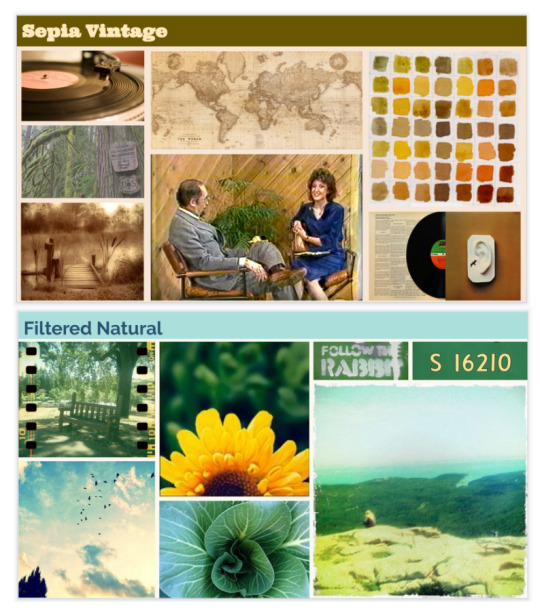
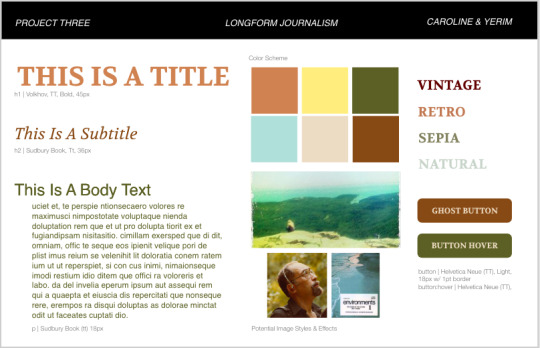
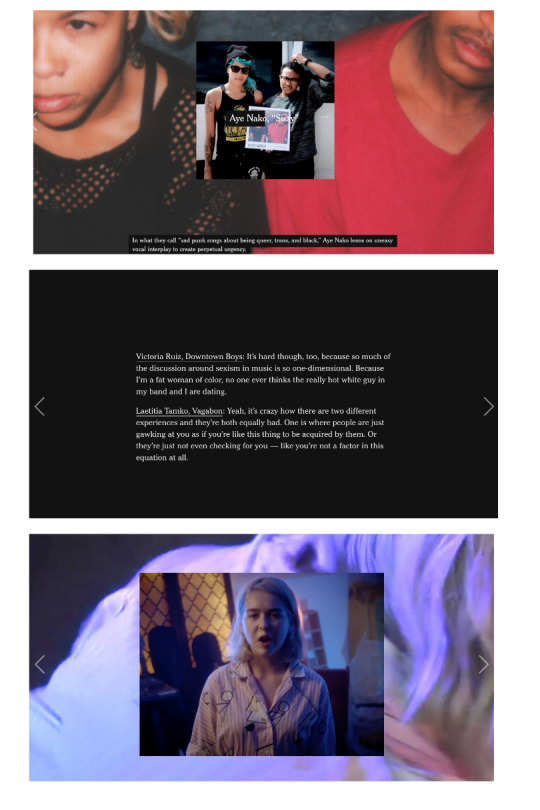
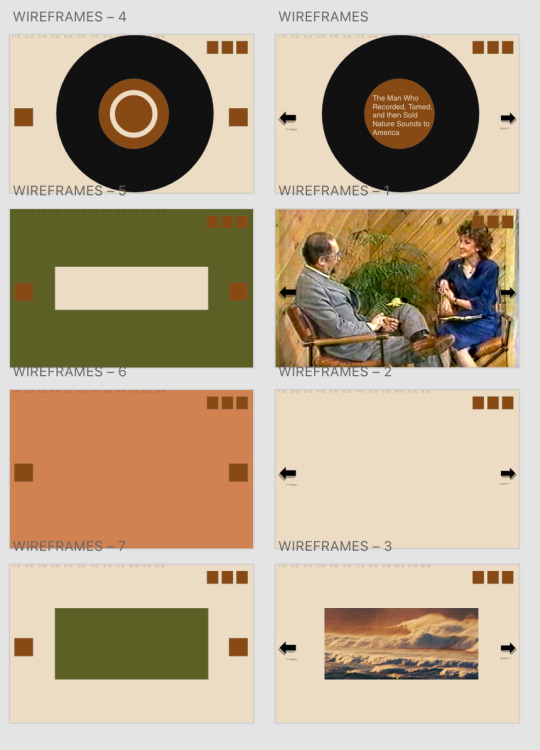



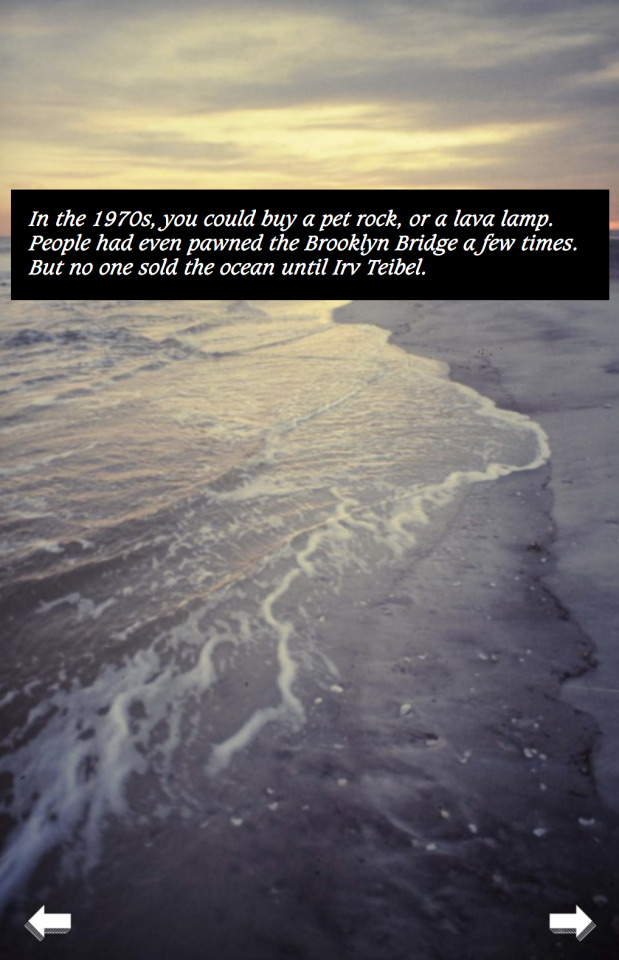
In Project Three, we created a single-page website that incorporates various types of content that allow for our audience to enjoy reading the article, “The Man Who Recorded, Tamed, and Then Sold Nature Sounds to America.”
Step 1: We began this project through conducting research on different responsive websites that are user-friendly on mobile, tablet, and desktop devices. It became clear that most often the size of the images are manipulated to allow the user to see the entire picture regardless of the device they are using.
After conducting our initial research, we also narrowed down the two long-form articles that we were most interested in working on. Our first choice, was the article on Irv Teibel titled, “The Man Who Recorded, Tamed, and Then Sold Nature Sounds to America.” We particularly liked this article because it included a variety of different media sources, including videos and sounds. Additionally, given the nature of the article, we were excited to find external videos and sounds that were produced by Teibel to incorporate in our project. Our second choice for this article was “Waco Restored,” as we have both seen the show Fixer Upper, and were interested in learning more about the effects of Chip and Joanna’s home renovations on the greater Waco area. Ultimately, we received our first choice pick of “The Man Who Recorded, Tamed, and Then Sold Nature Sounds to America” and were ready to begin Step 2!
Step 2: In Step 2, we took the time to read through the entire article, making sure to make careful annotations of how to split the article and where we could incorporate interesting media. Additionally, we took the time to research more about Irv Teibel, his recordings, and his influence, to discover external sources that we could use in our project.
Step 3: Independently, we created two different visual directions based on our own interpretations of the article. Mine had a more vintage aesthetic, while Yerim’s had a more nature-inspired aesthetic. Based on the feedback we received in class, there were pros and cons to each visual direction, and we were unsure which direction to pursue.
Step 4: We ultimately decided to create a third visual direction, highlighted in Step 4, that is a combination of my ideas, and Yerim’s ideas.
In this step, we also discovered an article written by the New York Times documenting women’s place in Rock N Roll ( https://www.nytimes.com/interactive/2017/09/05/arts/music/25-women-making-best-rock-music-today.html). We were both inspired by the way that New York Times utilized media in new and diverse ways to create an enjoyable and interesting site. We decided that we would explore using similar interactions in our site, in an attempt to incorporate both audio and visuals into our long-form article.
Step 5: We created multiple wireframes in Adobe XD with about 7 different main slides that we would be able to easily replicate for different text throughout the article. We then used these sketches to produce coded wireframes in HTML and CSS.
Step 6: We coded static digital wireframes in html and css for a mobile, tablet, and desktop device. We were able to use the Interneting is Hard tutorial, in addition to our in class exercises to create this simple responsive website. With our digital wireframes complete, we were then ready to add our styles.
Step 7: We turned our digital static mockups into our final site. Using the mockups was incredibly beneficial, however our end product differed slightly from our initial ideas.
Project Discussion: I really enjoyed working on this project, as it gave me the opportunity to showcase everything that we learned in the classroom and explore new types of code. There were definitely elements of this project that we struggled with, as it took time to discover the best way to share our code, and we were ambitious with the number of interactions we wanted to incorporate into our site. Ultimately, we hope to have highlighted the incredible work of Irv Teibel through creating an interesting and user-friendly website.
1 note
·
View note